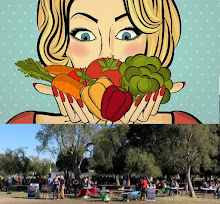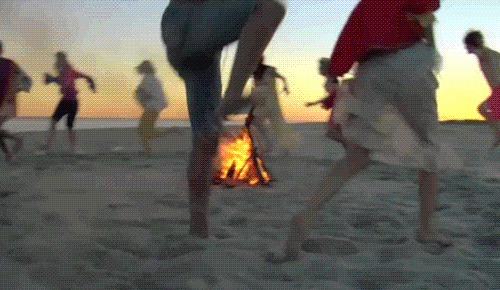Seven Dharmachari [with Buzz Killington] (Wisdom Quarterly)

Life begins at conception. The Buddha once explained that three things were necessary for conception:
the coming together of mother and father
the woman being in "season" (fertile phase), and equally important
the presence of the
gandhabba (conventionally-speaking, the being to be reborn, ultimately-speaking, the "causal continuum of consciousness" or karmic potential of the life-force appearing as a functionally-integrated set of
Five Aggregates of Clinging).*

Life does not begin at birth (partition). The lifestream was flowing long before that. This
round has no conceivalble beginning. Coming to birth in the womb one is, in a normal sense of speaking, reborn at conception, not post-partum with the first breath (one was "breathing" amniotic fluid long before that) or at the time of naming (personhood) as some cultures used to describe.
One is already experiencing the (potential) results of one's karma and is, in a spiritual sense independent and fully generating karma one will be personally responsible for by age 7. That is therefore when one becomes capable of full enlightenment (arahantship), although it is of course extraordinarily rare that anyone attains at that young of an age. But it has been known to happen based, it would seem, on past life karma coming to fruition.
All this having been said, it is quite inadvisable to visit and leave something important at a Bangkok temple if one wishes long life, health, and happiness for oneself. But sadly the social reality does not always accommodate our healthy and happy aspirations.
You can tell yourself what you want, whatever makes you feel better (any defensiveness or rationalization offered by atheists, materialists, scientists, or cynics is understandable to justify a desperate act) -- nothing good comes of guilt or shame after the fact -- but there is no substitue for prevention. Have sex but don't have it without protecting everyone involved, particularly yourself.
Although Thailand is home to a huge and active sex industry, many Thais are conservative on sexual matters, and Buddhist activists especially oppose weakening abortion laws. 2,000 Fetuses Found at Buddhist Temple
Huffington Post (continuing coverage)

BANGKOK — On the grounds of a Buddhist temple, dozens of white plastic bags lay in carefully arranged rows. Each sack was knotted at the top and contained the remains of a fetus. Thai authorities found about 2,000 remains in the temple's mortuary, where they had been hidden for a year -- apparently to conceal illegal abortions.
A strong stench had drawn police to the temple in Bangkok's old city Tuesday, and authorities searching the mortuary -- where bodies awaiting cremation are normally kept -- initially found more than 300 fetuses. They returned Friday to find more than five times that number, according to police Lt. Col. Kanathud Musiganont.
Health officials, police and charity workers counted the fetuses, placing each one in a white plastic bag bearing the charity's name in red Thai script and Chinese characters. The group is often involved in the handling of remains, including recovering bodies from accident scenes and organizing burials.
As the remains were laid out, Buddhist worshippers left offerings for the fetuses: milk and bananas to nourish their spirits in the afterlife.
Abortion is illegal in Thailand except under three conditions -- if a woman is raped, if the pregnancy affects her health or if the fetus is abnormal.
More>>
Buddhism, more than meditation?
Katherine Marshall conversation with Thai Buddhist activist Sulak Sivaraksha

In 1953, I went to London to study. In our family background, which was middle-class and upper-class, being educated in Britain meant that you were educated properly, and that could help you get ahead. England was the place to be. While I was in England, I joined the Buddhist Society. Mr. Christmas Humphreys, founder of the Society, was a very great man.
But I did not agree with his approach. His view was that a Buddhist must concentrate on meditation, even when they are part of the society. He said that Christian men are wrong because they got involved in society and politics and lost their spirituality.
To be Buddhist, he argued, you must concentrate on meditation. I felt that he was fundamentally wrong. Meditation is a good thing, but it does not mean only looking inwards. I realized that many Buddhists were from middle-class backgrounds. They didn't realize the suffering of the majority of our people. They didn't even question their own lifestyles. I think that is escapism, not Buddhism.
More>>*Really, There is No Soul (Self) and Yet...

*This is, quite understandably, where people get the idea of a soul, spirit, or ghost. It is that in a mundane sense, that is, in a conventional way of speaking. But it is not at all that in an ultimate sense with penetrative understanding. Still, people will argue.
The argumentative types who go around saying, "There is no self, Buddhism does not believe in a soul, cool, so I could do what I want" have no understanding of the meaning of these profound statements.
To say that there is no self, no identity from life to life, nothing that is I, me, or mine, no personality, no ego, no "soul" is like saying of a solid table that is, from a physics perspective, mostly empty space.
That is certainly true but very misleading if one does not understand and clearly distinguish that one means (ultimately) at a subatomic level.
"I" have no "self," yet I am not liberated by that information -- and that's what it is right now, just information. I still suffer, and I take my illusion quite seriously and personally even though -- at a theoretical level -- I know better.
For I have not penetrated that ultimate truth with knowledge-and-vision born of insight meditation with a mind first purified by profound states of concentration.
And even when I do, the conceit "I am" will still linger until full enlightenment. A stream-enterer (first stage of enlightenment) has overcome self-view or personality-belief but, oddly, has not yet overcome the conceit "I am."
What then of ordinary, uninstructed worldlings like ourselves going about being born, eating, and getting hopelessly entangled in good and bad karma over and again? We're lucky to ever so much as hear the teaching of egolessness or "no self" (anatta).
And when we do? We cling to the Five Aggregates even more rather than engage in the practice of the Path that leads to the realization, knowledge, and vision of the complete end of suffering (nirvana). I think most of us prefer our petty suffering and our even pettier sense of ego.
 (blog.sub-studio.com)
(blog.sub-studio.com) The country and its people promote non-materialistic values and live in harmony. However, by opening their borders, it is opening a Pandora's box. It is now just a matter of time before the flood of Western information and Chinese expansionism corrupts this Buddhist gem. Humans may not be suitable for ruling as Naga ("Dragon") Kings. We make "modern" material and scientific advances, but perhaps at the price of our spirituality and sanity. We envy and are constantly trying to get back to Shangri-la, as the Bhutanese will soon be trying. The American Ron Teaguarden (Dragon Herbs) has already made inroads establishing a company to extract Bhutan's herbal wealth and native medicinal lore. But soon the extraction of its natural resources as large-scale capital commodities begins.
The country and its people promote non-materialistic values and live in harmony. However, by opening their borders, it is opening a Pandora's box. It is now just a matter of time before the flood of Western information and Chinese expansionism corrupts this Buddhist gem. Humans may not be suitable for ruling as Naga ("Dragon") Kings. We make "modern" material and scientific advances, but perhaps at the price of our spirituality and sanity. We envy and are constantly trying to get back to Shangri-la, as the Bhutanese will soon be trying. The American Ron Teaguarden (Dragon Herbs) has already made inroads establishing a company to extract Bhutan's herbal wealth and native medicinal lore. But soon the extraction of its natural resources as large-scale capital commodities begins. CLICK TO ENLARGE (bhutanecoventure.com)
CLICK TO ENLARGE (bhutanecoventure.com)





















































































































































































































































































